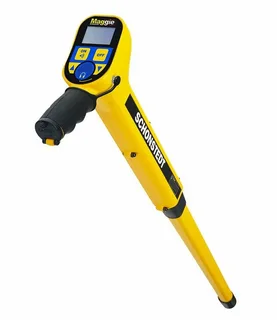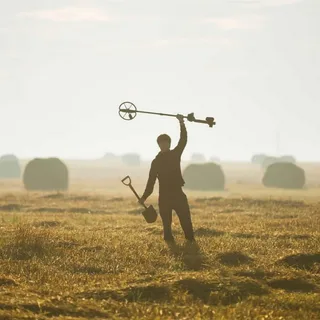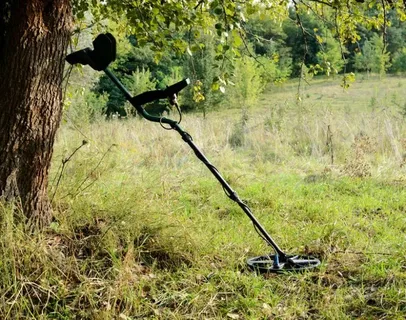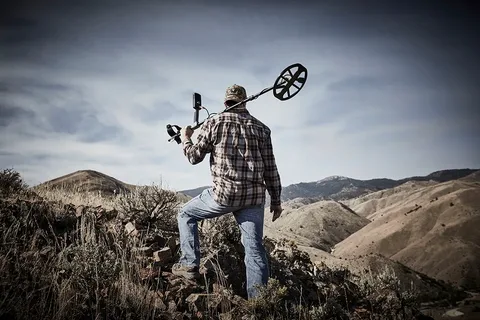Panning equipment is essential for amateur gold prospectors looking to find success in their endeavors. From gold pans to snuffer bottles, having the right tools can make all the difference when it comes to uncovering valuable gold deposits. In this article, we will explore the top 5 must-have panning equipment for amateur gold prospectors, providing valuable insight and recommendations for those looking to improve their prospecting experience. Whether you’re just starting out or looking to upgrade your gear, having the right panning equipment can greatly enhance your chances of striking gold.
1. Gold Pan: The most essential tool for gold prospecting, a good gold pan is typically made of metal or plastic and features ridges and traps to capture small gold particles while allowing lighter materials to wash away.
2. Classifier: A classifier, also known as a sieve or screen, is used to separate larger rocks and debris from the finer materials that may contain gold. This helps to streamline the panning process and increases the efficiency of finding gold.
3. Snuffer Bottle: A snuffer bottle is a small, vacuum-sealed container with a thin nozzle used to suck up small gold flakes and dust. It is essential for retrieving fine gold particles that are not easily picked up by hand.
4. Crevice Tool: A crevice tool, often a small pry bar or brush, is used to probe and scrape around cracks and crevices in rocks and riverbeds where gold may accumulate. This tool is ideal for reaching places that may be difficult to access with a regular gold pan.
5. Magnifying Loupe: A magnifying loupe is a small, handheld magnifier that is used to closely inspect gold specimens for impurities and to identify smaller gold particles that may not be easily visible to the naked eye. This tool is crucial for accurately assessing the quality and value of found gold.
The Essential Guide to Panning Equipment for Gold Prospectors

The Essential Guide to Panning Equipment for Gold Prospectors covers everything you need to know about the tools and equipment necessary for successful gold panning. It includes detailed information on different types of pans, classifiers, snuffer bottles, and other essential tools. The guide also provides tips and techniques for using each piece of equipment effectively to maximize your chances of finding gold. Whether you’re a beginner or experienced prospector, this comprehensive guide will help you gear up for your next gold panning adventure.
Top 10 Must-Have Panning Tools for Beginner Prospectors

1. Gold Pan – The most essential tool for every prospector, the gold pan is used to separate gold from other sediments in water.
2. Sluice Box – This long, narrow tool uses riffles to trap gold particles as water passes through it.
3. Rock Hammer – For breaking apart rock and sediment to access buried gold.
4. Classifier – A mesh screen used to sift and separate larger debris from the finer material.
5. Snuffer Bottle – A small, suction-powered tool used to extract tiny gold particles from the pan.
6. Magnifying Loupe – Essential for closely inspecting potential gold finds.
7. Metal Detector – Useful for locating metal-rich areas and detecting buried gold nuggets.
8. Shovel – For digging and moving larger amounts of sediment and soil.
9. Tweezers or Picks – Handy tools for picking out small pieces of gold from gravel and sand.
10. Backpack – Essential for carrying all the necessary tools and equipment for a day of prospecting.
How to Choose the Best Panning Equipment for Your Gold Adventures

When choosing the best panning equipment for your gold adventures, consider the following factors:
1. Size and Weight: Select equipment that is lightweight and portable, making it easier to carry and use in the field.
2. Durability: Look for sturdy materials that can withstand the wear and tear of regular use in various environments.
3. Efficiency: Choose equipment that is designed to quickly and effectively separate gold from other materials, such as sand and gravel.
4. Flexibility: Opt for panning equipment that allows for easy adjustments and maneuverability, enabling you to work in different locations and conditions.
5. Price: Consider your budget and find equipment that offers the best value for your investment, balancing cost with quality.
By considering these factors, you can choose the best panning equipment for your gold adventures and enhance your chances of success in finding valuable gold deposits.
Panning Equipment 101: A Beginner’s Introduction to Gold Mining Tools

Panning Equipment 101: A Beginner’s Introduction to Gold Mining Tools is a comprehensive guide to the various types of equipment used in gold panning and mining. It covers the basics of gold panning, including the essential tools such as pans, shovels, and classifiers. The guide also provides information on more advanced equipment such as sluice boxes, dredges, and metal detectors. Additionally, it offers tips on how to use this equipment effectively and safely while prospecting for gold. This resource is designed to help beginners gain a better understanding of the tools and equipment necessary for successful gold mining.
The Pros and Cons of Different Panning Equipment Options
Panning equipment options include pans, sluice boxes, and gold panning machines.
Pros of using a gold pan include its simplicity and low cost. It can be easily transported and is suitable for small-scale prospecting.
However, using a gold pan requires skill and patience, and it may not be as efficient as other methods. Sluice boxes are more efficient as they can process larger amounts of material and are easy to set up, but they are not as portable as gold pans.
Gold panning machines, such as spiral wheels and spiral panners, are the most efficient option for processing large amounts of material. However, they can be expensive and require power to operate.
Ultimately, the best panning equipment option depends on the specific needs and resources of the prospector.
Upgrading Your Panning Equipment: What to Consider Before Investing
Before investing in new panning equipment, it’s important to consider several factors. First, assess your current equipment and identify any limitations or areas for improvement. Consider the specific type of gold or mineral you are panning for, as different equipment may be better suited for different materials.
Next, research the different types of panning equipment available on the market. Take into account factors such as efficiency, durability, and ease of use. Consider the size and weight of the equipment, especially if you plan to transport it to different panning locations.
It’s also important to establish a budget for your equipment upgrade. Determine how much you are willing to invest and compare prices from different suppliers. Keep in mind that quality equipment may come with a higher price tag, but it can also lead to more efficient and successful panning.
Additionally, seek out reviews and recommendations from experienced panners to gain insight into which equipment may be the best fit for your needs. Joining online forums or local panning clubs can also provide valuable information and advice.
Lastly, consider the long-term benefits of investing in new panning equipment. Will it help you increase your yield and efficiency? Will it make your panning experience more enjoyable? Evaluating these factors will help you make an informed decision before upgrading your panning equipment.
The Best Panning Equipment for Finding Gold in Rivers and Streams
The best panning equipment for finding gold in rivers and streams includes a gold pan, a classifier, a snuffer bottle, and a magnifying glass. A gold pan is essential for washing and separating the gold from other materials. A classifier helps to filter out larger rocks and debris, making the panning process more efficient. A snuffer bottle is used to suck up small gold flakes and nuggets, while a magnifying glass can help to identify and inspect tiny gold particles. Additionally, a pair of tweezers may also be handy for picking out smaller gold pieces. It’s important to have the right tools and equipment to maximize your chances of successful gold panning.
Essential Panning Equipment for Mining Enthusiasts and Hobbyists
See also: gold mining machinery
Essential panning equipment for mining enthusiasts and hobbyists typically includes a gold pan, classifier, snuffer bottle, magnifying glass, and small vials or containers for storing your findings. A sturdy shovel, bucket, and gloves are also important for excavation and handling materials. Additionally, a portable sluice box or rocker box can be useful for processing larger amounts of sediment. Waterproof boots and sunscreen are important for comfort and protection during extended periods of outdoor activity. Overall, having the right tools and safety gear is essential for a successful and enjoyable mining experience.
Tips for Properly Maintaining and Cleaning Your Panning Equipment
Properly maintaining and cleaning your panning equipment is essential for ensuring its longevity and optimal performance. Here are some tips to help you take care of your equipment:
1. Regularly inspect your panning equipment for any signs of wear and tear, such as loose screws, cracks, or rust. Address any issues immediately to prevent further damage.
2. Clean your equipment after each use to remove dirt, sand, and other debris that can cause damage and affect its performance.
3. Use a mild soap and water to clean the equipment, avoiding harsh chemicals that may corrode or deteriorate the metal parts.
4. Thoroughly dry your panning equipment after cleaning to prevent rust and corrosion.
5. Store your equipment in a dry, cool place to prevent moisture buildup and mildew.
6. Lubricate any moving parts of your panning equipment regularly to ensure smooth operation.
7. Follow the manufacturer’s guidelines for maintenance and cleaning to avoid voiding any warranties.
By following these tips, you can ensure that your panning equipment remains in good condition and continues to provide you with successful panning experiences.
The Ultimate Panning Equipment Checklist for Successful Gold Prospecting
The Ultimate Panning Equipment Checklist for Successful Gold Prospecting includes a few key items to ensure a successful gold panning experience.
1. Gold Pan: A high-quality gold pan is essential for effectively separating gold from other materials.
2. Classifier: A classifier helps to sift out larger rocks and debris, making the panning process more efficient.
3. Snuffer Bottle: A snuffer bottle is used to remove small specks of gold from the pan without losing them in the process.
4. Magnifying Glass: A magnifying glass can be helpful for closely inspecting any found gold particles.
5. Tweezers: Tweezers are useful for picking out small gold nuggets or flakes from the pan.
6. Waterproof Boots: Sturdy, waterproof boots are important for navigating the terrain around the water.
7. Gloves: Wearing gloves can protect your hands from rough terrain and prevent blisters during extended panning sessions.
8. Panning Apron: A panning apron can help keep your clothes clean and dry during the process.
By ensuring that you have all of these essential items on hand, you can increase your chances of a successful gold panning expedition. Remember to also familiarize yourself with local regulations and obtain any necessary permits before prospecting.